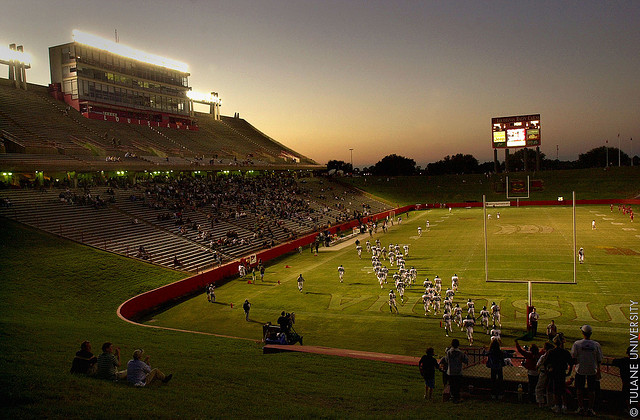By Dave Lavinsky
What is the goal of your favorite professional football team? That should be easy to answer. Their goal is to win the Super Bowl. And every week, their goal is to win that week’s game, so they can get one step closer to the Super Bowl. Importantly, every coach and every player on each football team shares this vision — which allows the team to work as a cohesive unit in pursuing their goal.
Interestingly, having this consolidated vision does NOT give a football team a competitive advantage. Because every other football team is also focused on the same goal. But in business, having a consolidated vision can and will give you a big advantage because most of your competitors are unfocused.
To prove most of your competitors are unfocused, let’s start with your company. What is your company’s 5- year goal? Can you answer this question without missing a beat? And if so, if I asked each of your employees this same question, would everyone give me the same answer? Probably not.
And, importantly, as baseball player Yogi Berra once said, “if you don’t know where you’re going, you probably won’t get there.” Football teams know where they’re going. But do you and your company?
In my new book, Start at the End: How Companies Can Grow Bigger and Faster by Reversing Their Business Plan, I layout a precise formula to 1) envision the company you want to create and 2) document and follow a plan to build it.
But, let me condense that formula right here into a few simple questions to get you headed in the right direction.
1. How would you like your company to look in five years? Specifically, what will your annual revenues be? What new products and/or services will you offer? And how many employees will you have?
2. What do you have to accomplish in the next year to get on the right trajectory to meeting this five year goal? How much must your revenues grow? What new products or services must you develop? For what position(s) must you recruit and train new employees?
3. What must you accomplish in the next month to get on the right trajectory to meeting your annual goal? How must your daily routine change in order to accommodate creating these new “business assets” (e.g., new products, new employees)?
4. How can you involve your team in creating your longer-term and shorter-term visions so they buy-in to your goals and act like a cohesive unit? And how will you monitor results to ensure steady progress towards your goals?
To build the business of your dreams, you need to start by envisioning how the business will look. I call this “starting at the end.” Next, you need to reverse engineer that vision by creating shorter-term plans and goals that enable you to make continuous progress towards your vision.
Answering the above questions will get you started. Importantly, stick with it. Each month you should measure your results and present them to your team. What went right? What didn’t? And then create your goal and plan for the next month.
There is no such thing as an overnight success in business. Rather, success in business is predicated on knowing what success looks like, and following a plan that ensures continual progress toward it. If you answered the questions above, you’ve already taken the critical first steps. Now be sure to involve your team, and adjust your daily schedule to ensure you continuously accomplish your goals.
For more small business advice, check out Dave Lavinsky’s last article, A Note to Entrepreneurs: Choose Wisdom Over Fear.
 About the author
About the author
Dave Lavinsky is a serial entrepreneur. He has run companies ranging from consumer products to professional services to websites. Since 1999, Dave has run Growthink, a consulting and information products firm that helps entrepreneurs and business owners to start, grow and sell their businesses, with a focus on business planning and capital raising. Dave is also the author of Start at the End: How Companies Can Grow Bigger and Faster by Reversing Their Business Plan (Wiley, 2012).
Photo by Tulane Public Relations



